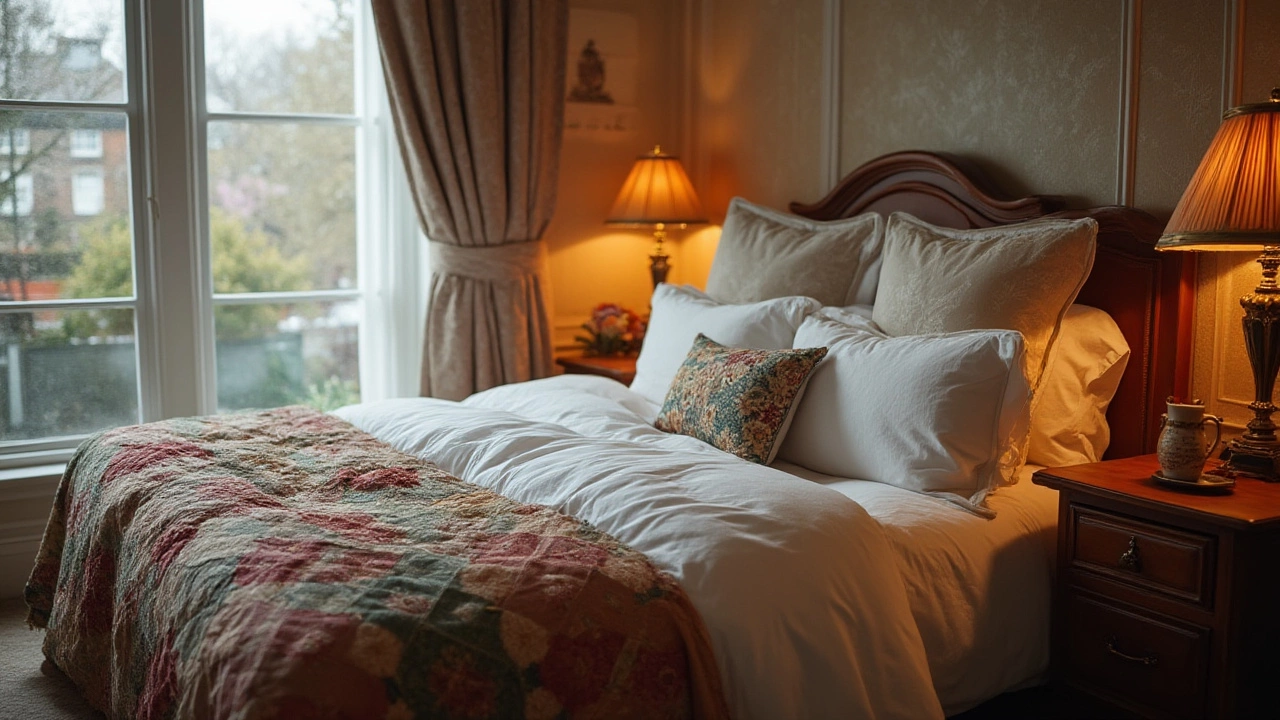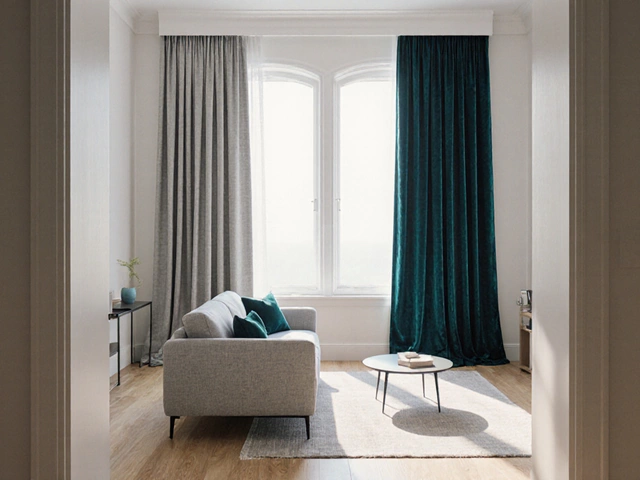It’s easy to see why people get mixed up about bedding. Ask ten people to define it, and you’ll hear answers from “just blankets” to “everything on the bed, including the mattress.” Walk through a department store in July and you’ll spot thick duvets next to silky sheets, with a tangle of pillows in between. The word ‘bedding’ sounds simple, but the real answer? Not so much.
What Exactly Counts as Bedding?
Say you walk into a store and ask for bedding. If all you want is a blanket, you might leave with a lot more than you bargained for. In the world of retail—and the language of home design—bedding is a broad term. It covers everything laid on a bed to sleep on or under, and sometimes even what’s used to decorate the bed. Yes, blankets are part of it, but they’re just one piece of a much bigger puzzle.
Let’s break down what people usually mean when they say 'bedding':
- Sheets: This means both the fitted and flat (or top) sheets. Fitted sheets are the ones with elastic corners that grip your mattress, while flat sheets—a staple in American homes—lie between you and your blanket or comforter.
- Pillowcases and Pillow Shams: Not just decorative, pillowcases keep your face clean and your pillows safe. Shams are the pretty covers for those pillows you don't actually sleep on (but they sure make the bed look inviting).
- Blankets: Yes, these count. Blanket can mean a light summer throw or a chunky winter wool, but in the bedding world, it’s only one element.
- Comforters, Duvets, and Duvet Covers: This is where things get fancier, depending on whether you’re in North America or Europe. A comforter is basically a thick, quilted blanket—usually filled with synthetic fibers or down. A duvet insert is similar, but needs a removable cover, which is washed and replaced more like a giant pillowcase. In Europe, duvets are everywhere.
- Bedspreads and Quilts: Some folks use these as a top layer for style or warmth. Think decorative, lightweight, sometimes hand-stitched. Quilts have their own cottagecore following, with patchwork patterns and family traditions attached.
- Mattress Protectors and Mattress Pads: Boring? Maybe. Necessary? Absolutely. These are thin covers that defend your mattress from sweat, spills, and other accidents. Pads might add a little extra softness, too.
So, does bedding just mean blankets? Not even close. Ask a hotel housekeeper, and she might rattle off a list of a dozen things that go on each bed. In catalogs or homeware sites, ‘bedding’ can include everything listed above—sometimes even those unnecessary-but-adorable throw pillows you never actually use.

Blankets vs. Bedding: Sorting Out the Differences
Blankets are the cozy stars of cold nights, but they don’t deserve all the attention. When people talk about bedding, they might mean just the essentials (sheets and something to cover up with), or the whole nine yards (including dust ruffles, decorative pillows, and even canopies if you’re feeling fancy). The confusion often comes from the way language shifts over time—and between countries.
For example, in the UK, the term ‘bedding’ tends to mean all bed linens: sheets, pillowcases, duvet covers, and sometimes blankets. In the U.S., say ‘bedding,’ and people usually picture the whole setup—whatever makes up a made bed. But blankets specifically are just one layer, usually not even the most visible one on a modern bed. In marketing or sales talk, bedding is a catchall term, a category header that covers everything you’d use to make your sleep space comfortable and inviting.
It gets trickier: Some people call their comforter a ‘blanket,’ while others insist it requires a specific name. Google ‘bedding vs. blankets’ and you’ll see actual debates—some believe anything you can throw over yourself at night is a blanket, others insist on traditional definitions (like: a blanket has a single layer, while a comforter is quilted, and a duvet needs a cover). No single answer fits everyone, but one thing is clear: in stores and in most homes, if it lives on the bed and isn’t the frame or mattress, someone will call it bedding.
A fun fact for language lovers—the word ‘bedding’ has roots in Old English, originally meaning anything that makes your bed more comfortable. Centuries ago, bedding often meant straw or hay piled on the floor as a mattress, topped with whatever cloth or animal skins a family had. Hard to picture that at your local Bed Bath & Beyond, right? Now, bedding is a billion-dollar business, with staple items and trendy seasonal colors. The core idea hasn’t changed: whatever you use to turn a hard surface into a restful nest, it counts as bedding.
Confused by retail packaging? You’re not alone. Shop at a big box store and you’ll see 'bedding sets' everywhere. Usually, a set contains a fitted sheet, flat sheet, pillowcases, and maybe a comforter or duvet cover. Blankets are rarely included, even though the term ‘bedding set’ tempts you to think you’ll get absolutely everything. Specialty stores might bundle things differently. Read the fine print—sometimes, you’ll need to buy your bedding extras (like a blanket or extra shams) separately.

Tips for Picking Bedding (and Why It Matters)
If you’re feeling overwhelmed by all these definitions, don’t worry. The best way to think about bedding is to focus on what makes you comfortable and happy to crawl into bed each night. Do you love the feel of crisp, hotel-style sheets? Prefer a thick weighted blanket, or a silky duvet cover? There’s no right answer—just what helps you sleep well.
Here are some things to consider before you buy:
- Material Matters: Cotton remains the favorite, especially Egyptian or Pima cotton. It breathes well, feels soft, and survives plenty of washes. For allergies, microfiber sheets or bamboo-derived options are popular now. Wool blankets are fantastic if you run cold. Linen sheets rumple in a stylish way (and get softer with every wash), but they’re an investment.
- Layers, Layers, Layers: In colder climates, consider layering a sheet, followed by a light blanket, then a comforter or duvet. You can always peel off layers if you get too warm at 2 a.m. For summer, ditch the heavy stuff and stick with just a top sheet and a throw. Hate tucking in? Try a fitted sheet and a big comforter—Europe’s classic trick.
- Thread Count Isn’t Everything: High numbers sound impressive (1000-thread-count, anyone?), but sometimes they just mean thinner threads packed tighter. Real comfort comes from the type of material and weave. Percale is cool and crisp; sateen is silky and soft. Don’t fall for marketing alone—feel the material if you can.
- Allergy Considerations: Ditch feather-filled comforters if you’re sensitive to allergens. Hypoallergenic synthetics are everywhere now, and many brands offer allergy-resistant covers for pillows and mattresses.
- Fit Counts: Check the dimensions before you buy—especially now with thicker mattresses and pillow-top beds. Nothing is more annoying than sheets that pop off the corners every night. And king, queen, twin XL—these all need different sizing.
- Personal Style: Your bedding is personal. Florals, stripes, crisp white, or wild boho prints—pick what you love. Swapping out pillow shams or duvet covers is a cheap way to refresh your space without buying a whole new set.
- Washing Wisdom: Wash new bedding before you use it, especially to soften the fabric and remove any manufacturing chemicals. Most bedding lasts longer if you use cold water and gentle cycles. Don’t overstuff the washer—give those sheets and blankets room to tumble.
One more twist: There’s a fresh trend in buying ‘bundle’ bedding from online companies. Think: one box, everything you need, tailored to your bed’s size. It saves people from endless shopping—no more standing in the aisle squinting at labels. But these sets usually skip blankets, so if you crave an extra layer, you’ll need to hunt for one separately.
People spend a third of their lives in bed, so why not get picky? Your bedding isn’t just about keeping warm. It’s about creating a spot that feels safe, soft, and stylish—somewhere you actually look forward to ending your day. Whether you layer up with six different elements or keep it minimal doesn’t matter. The point is, bedding means more than just blankets. And your bed, your rules—a little knowledge just means you’ll shop smarter and sleep better tonight.







